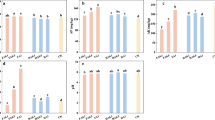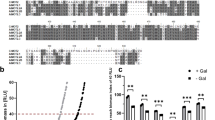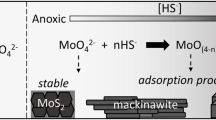Abstract
THE availability to plants of molybdate in some acidic soils may be increased by raising the pH. This behaviour of molybdate is analogous to that of phosphate, and suggests a study of its compounds with iron and aluminium, which are presumably responsible for holding molybdate in an insoluble form.
This is a preview of subscription content, access via your institution
Access options
Subscribe to this journal
Receive 51 print issues and online access
$199.00 per year
only $3.90 per issue
Buy this article
- Purchase on SpringerLink
- Instant access to full article PDF
Prices may be subject to local taxes which are calculated during checkout
Similar content being viewed by others
References
Jones, L. H. P., and Milne, A. A., Aust. J. Sci., 17, 100 (1954).
Simpson, E. S., J. Roy. Soc. W. Aust., 12, 57 (1926).
Schaller, W. T., Amer. J. Sci., 23, 297 (1907).
Haseman, J. F., Brown, E. H., and Whitt, C. D., Soil Sci., 70, 257 (1950).
Author information
Authors and Affiliations
Rights and permissions
About this article
Cite this article
JONES, L., MILNE, A. Aluminium Molybdate and its Formation in Clay Minerals. Nature 178, 1115 (1956). https://doi.org/10.1038/1781115a0
Issue date:
DOI: https://doi.org/10.1038/1781115a0
This article is cited by
-
Observation of [Al(OH) n (H2O)6-n ] n (MoO4) in hydrotreating catalyst precursors by solid-state27 Al NMR
Catalysis Letters (1993)
-
Particle shape in thixotropic aluminium and thorium molybdates gels
Kolloid-Zeitschrift und Zeitschrift für Polymere (1963)



